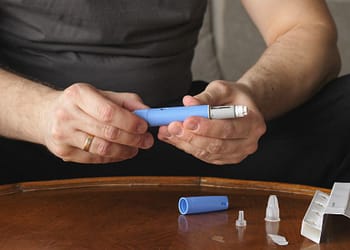When the depression makes everyday life difficult, the essential thing is to regain balance with a safe and personalized plan. In this context, the vortioxetine It can be an effective option recommended by a psychiatrist or family doctor. Below, I explain in clear language how it works, what reactions may occur, and when improvement is usually noticed, based on the technical specifications and recognized clinical guidelines.
How does Vortioxetine work in the brain?
It works by modulating several serotonin circuits: it inhibits its reuptake and also modulates receptors (5-HT1A agonist, 5-HT3 and 5-HT7 antagonist, among others). This combination can improve mood and certain cognitive symptoms (attention, processing speed). It is taken once a day, with or without food; the usual dose ranges from 10 to 20 mg depending on the patient's response and tolerance. It is not recommended to combine it with MAOIs or to start/restart without observing the washout periods prescribed by a healthcare professional.
What common side effects can be expected?
The most common symptom is mild and transient nausea, especially at the beginning. Dizziness, insomnia or drowsiness, constipation, and itching may also occur; these usually decrease over time. Compared to other antidepressants, the risk of sexual dysfunction may be lower, but not zero. Signs requiring urgent consultation include intense agitation, fever, sweating, and stiffness (possible serotonin syndrome), thoughts of self-harm in the first few weeks, or sudden changes in behavior. If you are pregnant, breastfeeding, have liver disease, or are using anticoagulants, individualized treatment should be discussed with your doctor.
When do its effects begin to be noticed?
The first changes are usually noticed between 1 and 2 weeks, with significant clinical improvement after 4–6 weeks of continued treatment. Maintaining daily intake and attending checkups allows for dosage adjustments and management of adverse effects. After remission, it is recommended to continue for several months to consolidate recovery and prevent relapse, always under supervision. If you don't notice progress or the effects are bothersome, don't stop on your own: talk to your healthcare professional to discuss adjustments or alternatives. Your plan should be safe, gradual, and focused on your well-being.






